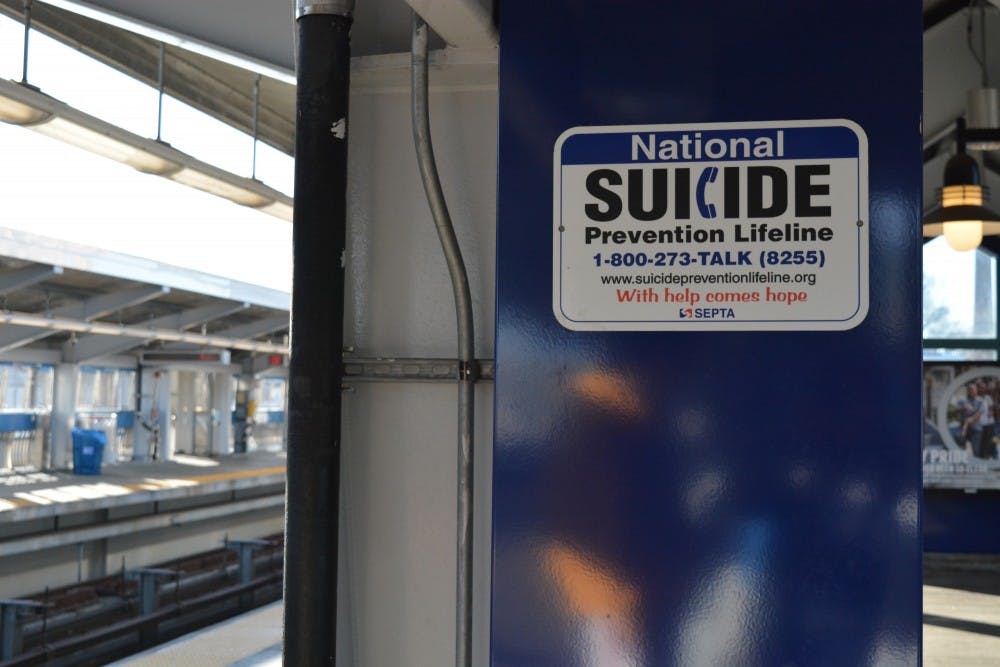There have been 66 deaths along SEPTA’s train, trolley and subway lines since 2011. Forty of these deaths have been ruled as suicides.
In 2014, SEPTA — whose stations near Penn provide easy transportation for students going home or traveling into the city — partnered with Montgomery County Emergency Service to install suicide prevention signs within its stations. It started as a pilot program at the Norristown Transportation Center.
Currently, there are about 1,000 bold red, blue and black signs displaying a suicide prevention lifeline number and website. At the bottom of the sign it says, “With help comes hope.”
The last five years have seen a constant pattern of deaths and suicides on SEPTA’s transportation system, averaging 12.8 deaths and 7.6 suicides a year. Data from 2015 has fallen in line with this trend: There were 13 total deaths in 2015, and seven of them were ruled suicides.
Scott Sauer, SEPTA’s assistant general manager of system safety, says that it is very difficult to analyze these trends and to conduct a study on the data.
“For one thing, they don’t happen that often,” Sauer said. “They are scattered over all different locations, different times a year and different demographics, so it’s very difficult to show if we are reducing suicides because it happens so infrequently.”
New Jersey Transit was one of the first regional rail lines to post suicide hotline signs at all of its railway stations. Jeff Kessler, executive chair of SEPTA Youth Advisory Council and Wharton and Engineering senior, says it was wise for SEPTA to follow New Jersey Transit in putting up suicide prevention signs.
“I think having signs that are prominent and featuring phone numbers and information on where you can get help are useful,” Kessler said. “To have the signs anywhere possible shows SEPTA’s commitment to suicide prevention.”
SEPTA’s transit police officers are trained in identification and mitigation when people are identified as intending to commit suicide. The officers are taught how to properly intervene in those situations. In the future, transportation supervisors will also hopefully be trained on how to identify potential suicides so they can report them to authorities.
Some experts believe that the best plan to prevent intentional deaths by locomotive would be to build fences to keep people off the tracks. Newer train stations in London and Tokyo have built walls dividing platforms from trains, and glass doors that slide open when the train has stopped, similar to U.S. airport rail lines.
However, Sauer is skeptical that this would work for SEPTA’s regional and local rail lines.
“When you look at the Market-Frankford Line and the Broad Street Line, which are completely segregated from the public, you still see suicides and attempted suicides on those lines,” Sauer said.
Train-related suicides are a national problem. According to the Federal Railway Association, from January through November 2015, there were 220 suicides by locomotive. As of now, SEPTA will continue to take an education and outreach approach to try to deal with this problem.
“From the operation standpoint, it is difficult to predict when these events will occur so the approach that we have tried to take is to educate anyone and everyone on the dangers of being on the train tracks,” Sauer said. “More specifically for those who intend to harm themselves, through the campaign with the prevention signs, we have tried to enlighten folks that there is help and give them someone to talk to.”









